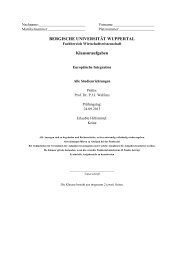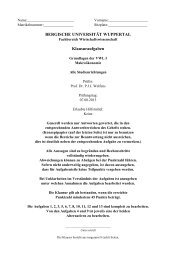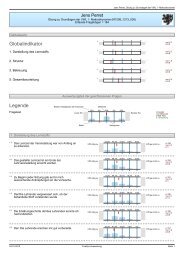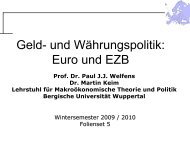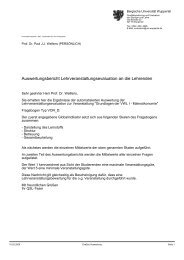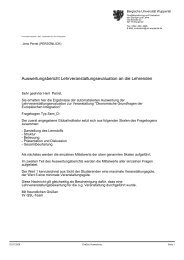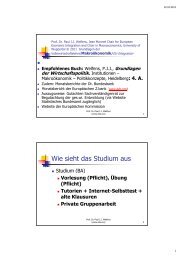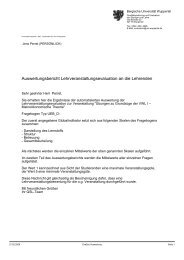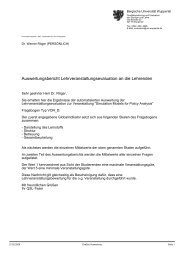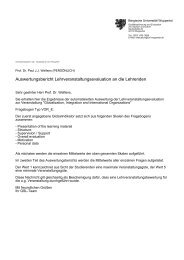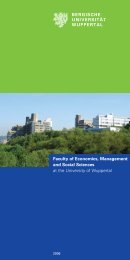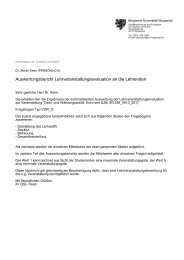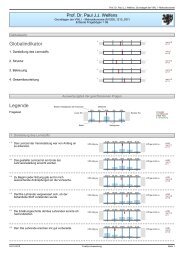UNIVERSITÄT POTSDAM - Prof. Dr. Paul JJ Welfens
UNIVERSITÄT POTSDAM - Prof. Dr. Paul JJ Welfens
UNIVERSITÄT POTSDAM - Prof. Dr. Paul JJ Welfens
You also want an ePaper? Increase the reach of your titles
YUMPU automatically turns print PDFs into web optimized ePapers that Google loves.
If the large degree of risk and uncertainty in the innovation process as well as<br />
information asymmetries between capital markets and R&D spenders are taken into<br />
account, it is not surprising that large social returns to R&D can coincide with relatively<br />
low rates of R&D investment. JONES / WILLIAMS (1997) conclude for the<br />
USA that the optimal amount of R&D investment is about four times the amount actually<br />
invested. However, other studies found less overwhelming empirical evidence.<br />
BARTELSMAN ET AL.(1996) applied the Jones / Williams model to Dutch manufacturing<br />
firm-level data and found that the private rate of return probably underestimates<br />
social returns by only a few percentage points. Examining the effects of R&D on productivity<br />
in a panel of French and US manufacturing firms, MAIRESSE / HALL<br />
(1996) found that R&D earned a normal private rate of return in the USA during the<br />
1980s. For selected sectors of German manufacturing, BÖNTE (1998) concluded that<br />
his results provide no evidence for “above-normal” rates of returns due to intraindustrial<br />
spillovers.<br />
Another important source for externalities is international R&D spillovers, i.e.<br />
the impact of foreign R&D on domestic productivity and output. COE / HELPMAN<br />
(1995) captured these effects by augmenting the above mentioned total factor productivity<br />
equation with import-weighted foreign R&D stocks. For West Germany they<br />
calculated elasticities of total factor productivity with respect to foreign R&D of 0.056<br />
(1971), 0.072 (1980) and 0.077 (1990). The elasiticities for France were a little bit<br />
lower: 0.045 (1971), 0.061 (1980) and 0.067 (1990), whereas the elasticities for Sweden<br />
were higher: 0.067 (1971), 0.087 (1980) and 0.093 (1990). BAYOUMI / COE /<br />
HELPMAN (1999) applied the same approach to a larger sample of countries and<br />
found important differences between the values of the coefficients for domestic and<br />
import-weighted foreign R&D for different groups of countries. Comparing the G-7<br />
countries and small industrial countries, the coefficient of import-weighted R&D stocks<br />
has the same value, but the coefficient for domestic R&D turned out to be much<br />
smaller for small industrial countries. For developing countries they assume that R&D<br />
capital is constant, and the coefficient of import-weighted foreign R&D turned out to<br />
be clearly higher. To the extent that the Internet stimulates business-related services<br />
trade in particular and trade in general, the Internet might have trade-related growth<br />
effects.<br />
Next one has to consider different possibilities of financing R&D. R&D can either<br />
be financed by companies or by government, and there is a lively controversy<br />
about the effects of government-financed R&D on output and productivity. In his<br />
summarizing overview GRILICHES (1995) concluded that most elasticity estimates<br />
are not sensitive to whether one uses total or only company-financed R&D stocks, but<br />
that there are other indications in the data that government-financed R&D produces less<br />
benefit than privately-financed R&D. Concretely, he presents estimations where the<br />
privately versus government-financed R&D mix variable has a significant positive co-<br />
33



